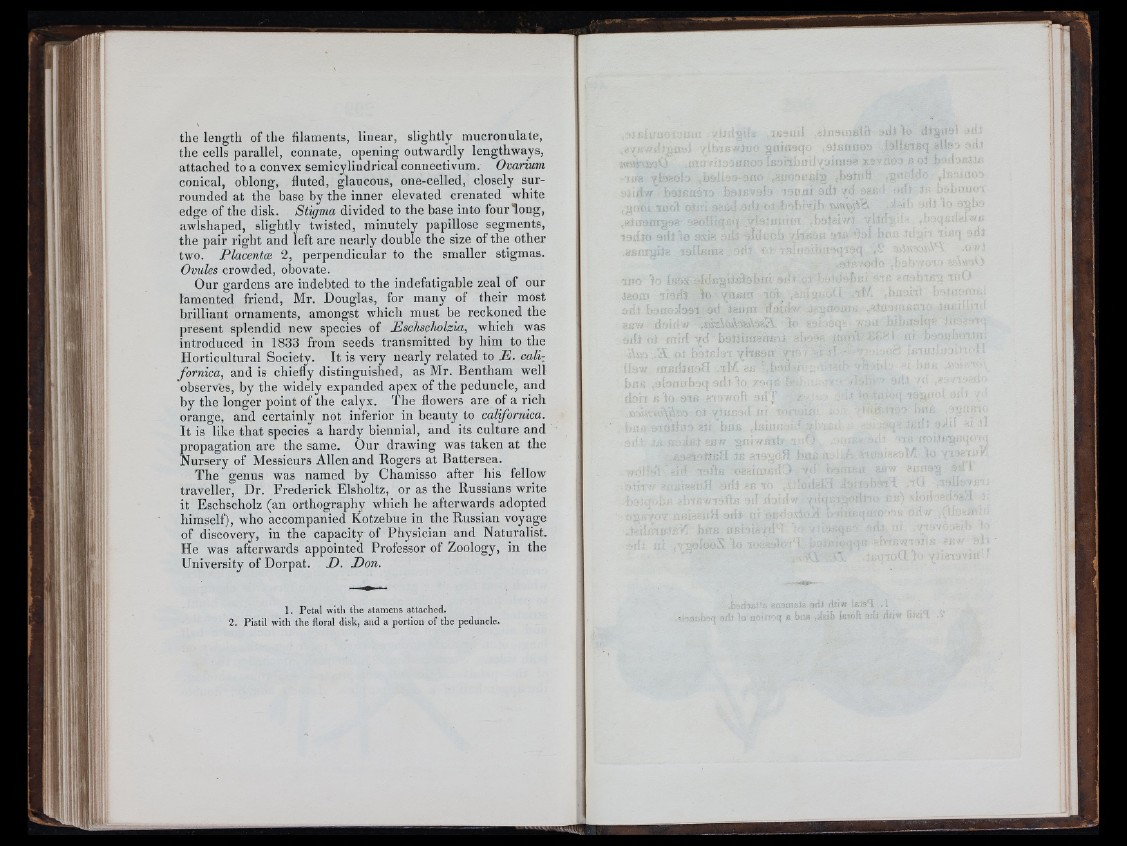
%
i-Z.iÍ
, i: 1
fIc,l. G:: '
the length of the filaments, linear, slightly mucronulate,
the cells parallel, connate, opening outwardly lengthways,
attached to a convex semicylindrical connectivum. Ovarium
conical, oblong, fluted, glaucous, one-celled, closely surrounded
at the base by the inner elevated crenated white
edge of the disk. Stigma divided to the base into four long,
awlshaped, slightly twisted, minutely papillose segments,
the pair right and left are nearly double the size of the other
two. Placentae 2, perpendicular to the smaller stigmas.
Ovules crowded, obovate.
Our gardens are indebted to the indefatigable zeal of our
lamented friend, Mr. Douglas, for many of their most
brilliant ornaments, amongst which must be reckoned the
present splendid new species of Eschscholzia, which was
introduced in 1833 from seeds transmitted by him to the
Horticultural Society. It is very nearly related to E . calf
fornica, and is chiefly distinguished, as Mr. Bentham well
observes, by the widely expanded apex of the peduncle, and
hy the longer point of the calyx. The flowers are of a rich
orange, and certainly not inferior in heauty to californica.
It is like that species a hardy biennial, and its culture and
propagation are the same. Our drawing was taken at the
Nursery of Messieurs Allen and Rogers at Battersea.
The genus was named by Chamisso after his fellow
traveller. Dr. Frederick Elsholtz, or as the Russians write
it Eschscholz (an orthography which he afterwards adopted
himself), who accompanied Kotzebue in the Russian voyage
of discovery, in the capacity of Physician and Naturalist.
He was afterwards appointed Professor of Zoology, in the
University of Dorpat. D. Don.
1. Petal with the stamens attached.
2. Pistil with the floral disk, and a portion of the peduncle.